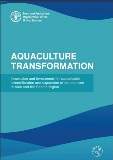Aquaculture technical reports
Publications

Aquaculture transformation – Innovation and investment for sustainable intensification and expansion of aquaculture in Asia and the Pacific region
2023
Asia and the Pacific region is the world’s largest aquaculture producer, contributing 92 percent of the world’s supply of farmed fish, crustaceans, molluscs, seaweeds and other aquatic foods. Sustainable aquaculture is increasingly being recognized as an important contributor to achieving the 2030 Agenda for Sustainable Development that covers multiple goals ranging from ending hunger, improving health and nutrition, responding to climate change, wealth creation and poverty reduction,.....

Small fish, huge impact
2022
WorldFish under MYSAP programme promoted the production of dried powder made from small indigenous fish species and piloted portable fish driers, designed to reduce contamination risks. The drier keeps the fish covered while drying them, thereby reducing the contamination risk and the pilot test demonstrated improved safety. The dried small indigenous fish powder was promoted as a complementary food for infants of six months onwards to achieve better nutrition in Bangladesh, Cambodia, Myanmar and...

The rise of plant-based seafood
2022
Plant-based for seafood are being produced using a range of ingredients and processes. The growth of the sector has largely been spearheaded by start-ups, many of which claim to be providing an ethical and sustainable alternative to farmed and wild-caught seafood. As the sector evolves, it is now also beginning to attract the attention of corporate food producers. Currently, plant-based seafood is not widespread globally, with the bulk of producers being based in high-income...

